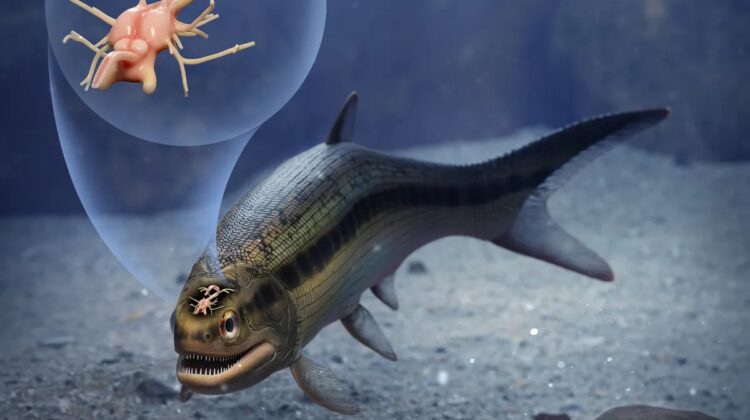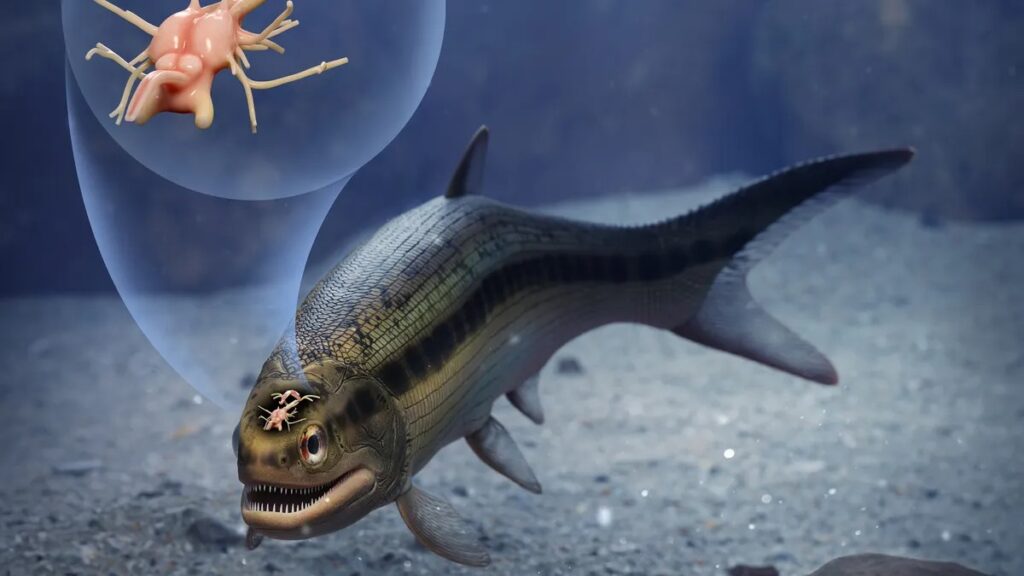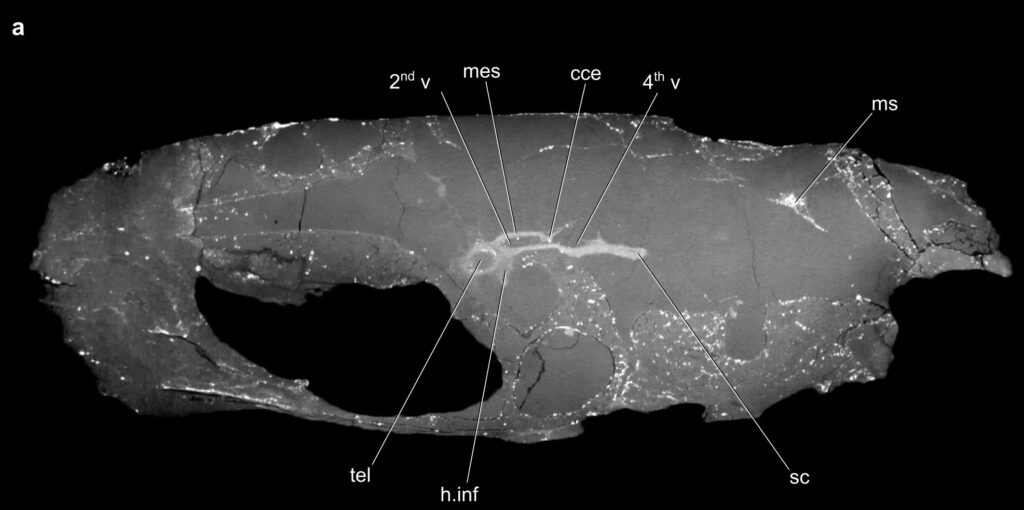
The brain has been hidden inside a fossil fish skull and is now revealing animal evolution secrets.
A fish died a long time ago, was buried in sediments, and eventually became fossilized. It is now the focus of a study that reveals “the oldest example of a well-preserved vertebrate brain” 319 million years later.
Rodrigo Figueroa, a doctoral student at the University of Michigan, led the study, which was published in the journal Nature on Wednesday. The small fish is a ray-finned fish called Coccocephalus wildi. Swordfish and trout are living examples of ray-finned fish. It is a diverse group of approximately 30,000 species.

Márcio L. Castro
“This unexpected discovery of a three-dimensionally preserved vertebrate brain provides us with a startling insight into the neural anatomy of ray-finned fish,” said paleontologist Sam Giles in a statement issued by the University of Birmingham. “It reveals a more complicated pattern of brain evolution than living species alone suggest, allowing us to better define how and when modern bony fishes evolved.” Giles is one of the study’s co-authors.
The researchers used a noninvasive CT scan – the same technology used for human medical imaging – to examine the skull without damaging it. They discovered a brain and cranial nerves about an inch (2.5 centimeters) long. According to the university, the brain and nerves were replaced with a dense mineral that preserved them “in exquisite detail.”


We’re all familiar with fossilized bones, but soft tissue preservation, such as brains, is much rarer. The researchers were able to compare the ancient brain structure to that of modern animals. All current ray-finned fish have brains that fold outward during embryonic development. Coccocephalus, on the other hand, causes the brain to fold inward. This information aids scientists in their understanding of the timeline of brain evolution in ray-finned fish.
Giles claims that the brain of Coccocephalus wildi is similar to that of paddlefish and sturgeon, which are considered “primitive” fish because they diverged from other ray-finned fish over 300 million years ago.
Over a century ago, the fossil was discovered in a coal mine in England. “Given the widespread availability of modern imaging techniques, I would not be surprised if we discover that fossil brains and other soft parts are far more common than we previously thought,” Figueroa said. “From now on, our research team and others will examine fossil fish heads from a new and different angle.”

Leave a Reply